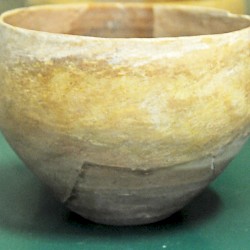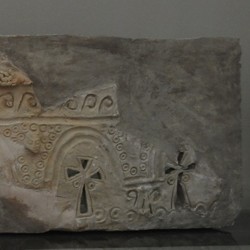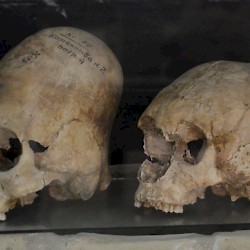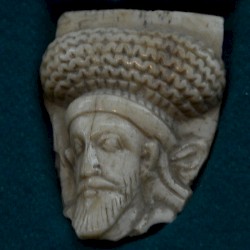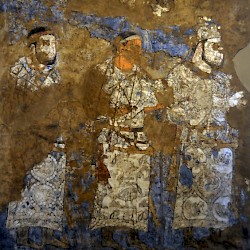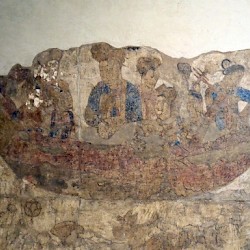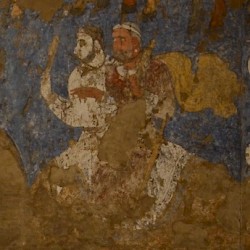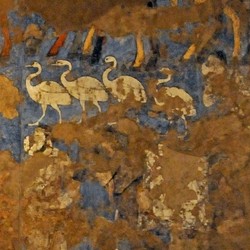Sogdians
Q3488901Sogdians (Greek: Σογδιανοί or Σόγδοι): ancient name for the people living in the region of Maracanda (modern Samarkand). Their land is known as Sogdia, Sogdiana (Greek Σογδιανή), or Transoxiana.
The land
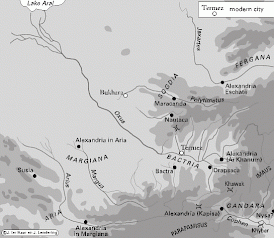
Situated in Central Asia, the ancient landscape of Sogdia was between the steppe of the Massagetes in the north, fertile Chorasmia in the northwest, the oasis of Margiana in the southwest, Aria in the south, and Bactria in the southeast. The name "Sogdia", however, referred to different areas at different times, so Chorasmia and the northern steppe could at times be considered part of Sogdia as well.
Sogdia was the central part of the road from the Mediterranean and the Near East to the Far East. In the northeast of Sogdia was the Fergana valley, from where it was possible to travel along the Silk Road to China, especially after the domestication of the Bactrian camel. Sogdian trade posts are known from Turfan, dating to the second century BCE. To the southwest, Margiana was the next stop to Persia and the western lands beyond it.
The capital of Sogdia was Maracanda, which is almost certainly identical to modern Samarkand and was situated on the banks of the river Polytimetus (modern Saravšan). Other important rivers were the Oxus in the south and the Jaxartes in the north. Between these rivers, which the geographer Strabo identifies as the borders of Sogdia,note was the Kyzylkum Desert. Calling themselves Sughdh in their own Indo-European language, the inhabitants were called Sugda in Avestan, Suguda in Persian, and Σογδιανοί or Σόγδοι in Greek.
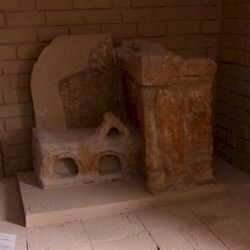 Afrosiab, Zoroastrian fire altar |
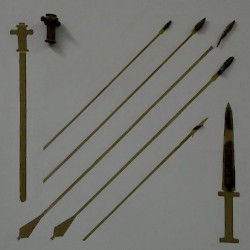 Afrosiab, Sogdian weapons |
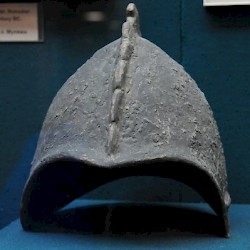 Afrosiab, Sogdian helmet |
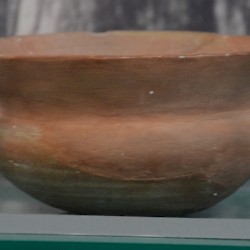 Afrosiab, Persian dish |
History
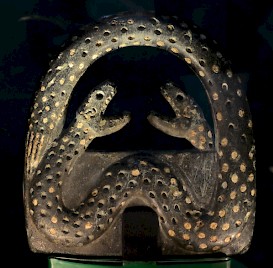
Like early Iranian and Indian society, Sogdia had its roots in the Andronovo Culture, a Bronze Age civilization in the second millennium BCE. This was the world of the prophet Zarathustra and it comes as no surprise that the holy book of Zoroastrianism, the Avesta, describes Sogdia as one of the good creations of the wise lord Ahuramazda.note Strabo correctly observes that in their customs, the Sogdians and the (Iranian) Bactrians did not differ much, although the Bactrians were more often living in cities.note
Probably, the Sogdians were subdued to the Achaemenid Empire by Cyrus the Great (r.559-530), although the evidence is not as strong as is sometimes believed. The Greek researcher Herodotus implies that both the Bactrians in the south and the Sacae in the north were subdued by Cyrus, which suggests but does not prove that Sogdia was conquered as well.note Two centuries later, Alexander the Great captured a city that was called Cyreschata, which was explained as "the most distant city of Cyrus", but we may entertain some doubts about this etymology.
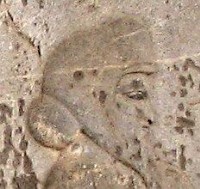
However this may be, the Sogdians are mentioned as people within the Achaemenid Empire in the Achaemenid Royal Inscription known as DSf as the producers of lapis lazuli and carnelian, are shown on the reliefs of the Apadana stairs in Persepolis, and are mentioned in both the Behistun Inscription and Herodotus' list of satrapies.note To judge from the archaeological record, in which Persian objects are almost lacking, control of this satrapy was indirect. Yet, it must have been sufficiently tight to allow the Persian king Xerxes to order Sogdians to join his army.note
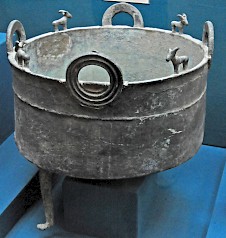
In 329-327 BCE, the area was conquered by Alexander the Great, who needed a genocidal campaign and the foundation of several towns to achieve full control. After his death in 323, Sogdia belonged to the Seleucid Empire (as part of the Bactrian satrapy), but in the course of the third century BCE, it was taken over by the Sacae and the Yuezhi nomads. The Silk Road now became really important and Sogdia was an important node in a network between the Hellenistic kingdoms in the west and Han China in the east.
At the beginning of the common era, the area was part of the Kushan Empire (i.e., the state founded by the Yuezhi). Among the later rulers were the Persian Sasanians and the Hephthalites (fifth century CE), but the area was to some extent independent, flourishing especially after the demise of Sasanian power.
In this period, the population started to change. It had, until then, been closely related to the ancient Iranians and Indians, with whom the Sogdians shared roots in the Andronovo Culture, but in Late Antiquity, Turkish-speaking nomads infiltrated the region and seized control. Sogdia belonged to the realms of the khan of the Western Turks.
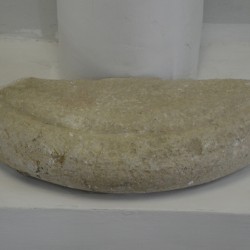 Afrosiab, Hellenistic column base |
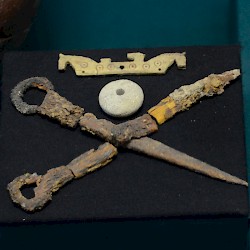 Koktepa, Scissors |
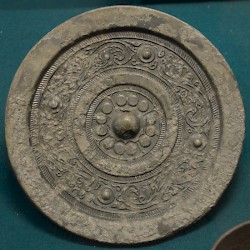 Koktepa, Mirror |
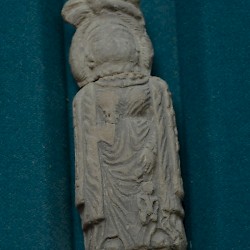 Afrosiab, Hellenistic deity |
Late Antiquity
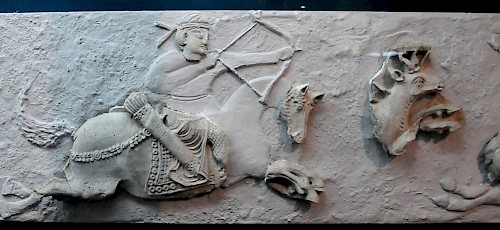
Sogdian texts from the first centuries CE document a pluralistic society, with Zoroastrian, Jewish, Manichean, Nestorian (Christian), Hindu, and Buddhist sanctuaries. Maracanda was more important than ever before; its royal palace was decorated with splendid wall paintings, the "Ambassadors Frescos", which document contacts with Persia and China.
In 711, however, the Islamic Arabs seized control. The eighth century was a period of continued splendor; Samarkand, as it was now called, remained one of the most important cultural end economic centers of the Early Medieval world. One generation after the Arab conquest, Sogdia was the center of the successful resistance against the Umayyad caliphs, which culminated in the establishment of the Abbasid Caliphate in Baghdad in the mid-eighth century.
